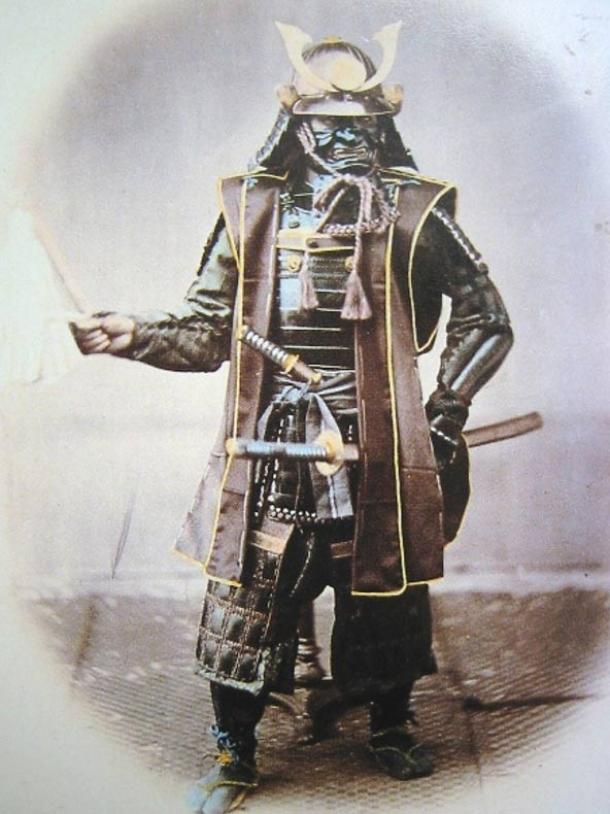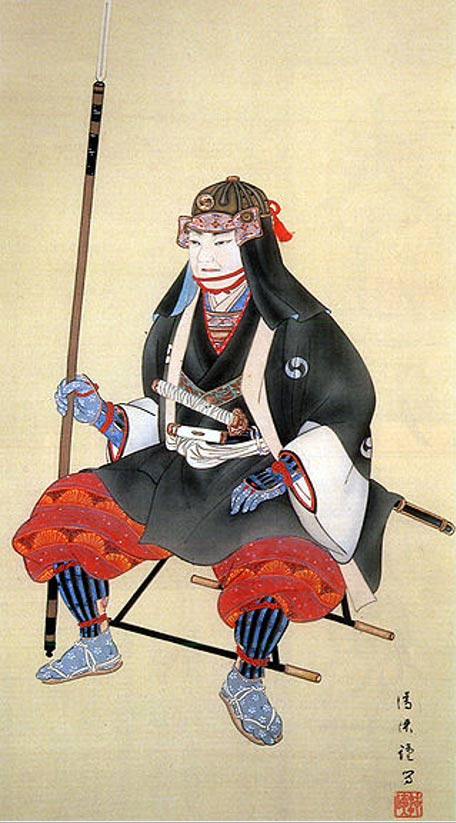
47 Ronin: The Samurai Warriors that Sought to Avenge the Death of their Master
The Japanese samurai are arguably among the greatest warriors known in history. Their code of conduct was romanticized and popularized at the end of the 19 th century in Bushido: The Soul of Japan, a book written by Inazo Nitobe. In the book, Nitobe highlights the eight key values of Bushidō (meaning the way of the warrior) – justice, courage, mercy, politeness, honesty and sincerity, honour, loyalty, and self-control. The essence of Bushidō is manifested in one of the most famous tales about the samurai – the 47 Ronin.

Photograph of Japanese samurai in armour, 1860s (Wikimedia Commons)
The 47 Ronin is a tale about the Genroku Akō incident, a historical event that happened in Japan in the early 18 th century. The story begins in the year 1701, when Emperor Higashiyama sent imperial envoys from his seat in Kyoto to the court of Shogun Tokugawa Tsunayoshi in Edo. During the envoys’ visit, two young daimyo (Japanese feudal lords), Asano Naganori of Ako and Kamei Sama of Tsumano were performing their Sankin-kōtai (alternate attendance) in the Shogun’s court. Thus, the two daimyo were given the task of looking after the envoys during their stay in Edo. The official assigned to train Asano and Kamei in court etiquette was the master of protocol, Kira Yoshinaka.
Kira has been described as a greedy and corrupt official, and expected monetary bribes from the two daimyo. Asano and Kamei, however, refused to offer Kira bribes, and were consequently treated with contempt by the master of protocol. At one point, Kamei could no longer stand Kira’s humiliation, and sought to kill him. Disaster was averted, however, when Kamei’s retainers secretly bribed Kira with a huge sum of money. As a result, Kamei was treated nicely by Kira, though Asano continued to be treated harshly. The final straw came when Kira insulted Asano, calling him a ‘country bumpkin with no manners’, in Edo Castle. Asano drew his wakizashi (short sword), and struck Kira on the head before being stopped by the Shogun’s guards. Although Kira only suffered a light wound, it was a serious offense to draw a sword within Edo Castle and wounding a Shogunate official. As punishment, Asano was ordered to commit seppuku (ritual suicide), whilst his family was dishonoured, castle confiscated, and samurai retainers disbanded, turning them into ronin (masterless samurai).

Screenshot of the samurai Ronin from the Universal Picture’s film ‘47 Ronin’
Asano’s principal retainer was a samurai named Oishi Kuranosuke, who sought to avenge his master’s death, although it was against the law to do so. In order to achieve this goal, Oishi secretly formed a group of 47 loyal ronin, who swore to kill Kira at any cost. The ronin decided to bid their time, as Kira had fortified his residence and increased the number off his guards, fearing that Asano’s retainers would seek vengeance. In time, however, Kira relaxed his guard, as no attempts on his life were made, and he thought that the ronin were no longer seeking to kill him.

Oishi Kuranosuke, leader of the 47 Ronin (Wikimedia Commons)
Finally, on the 14 th of December 1702, the ronin gathered at Honjo, near Edo, and prepared for their attack. One of them was sent to Ako prior to the attack to tell their tale. The ronin were then divided into two groups, one entering Kira’s residence from the rear, whilst the other assaulted the front. Although many of Kira’s guards were killed or wounded, they managed to put up a spirited defence, and even succeeded in killing one of the ronin. Kira, however, did not have such courage, and hid himself in an outhouse. When the ronin finally discovered Kira, after an hour of searching, he was offered the chance to commit seppuku and die honourably. Kira, however, is said to have been too cowardly to do so, and was beheaded by Oishi.

The ronin assaulting Kira’s residence, by Hokusai. Photo source: Wikimedia.
After bringing Kira’s head to Asano’s grave at Sengaku-ji Temple, and offering it to their master, the surviving ronin surrendered themselves to the authorities. The ronin were ordered to commit seppuku, and were buried near their master at Sengaku-Ji Temple. The reputation of the ronin became cemented in Japanese history, and their graves soon became a pilgrimage site. The 47 ronin also became memorialized in popular culture, and their story has been adapted over the centuries in such media as kabuki (Japanese dance drama), bunraku (Japanese puppet theatre), books, television, and films, the latest being the Hollywood action film ‘47 Ronin’ previewed below.
Top image: Screenshot of the samurai Ronin from the Universal Picture’s film ’47 Ronin’
References
Nitobe, I., 1905. Bushido, The Soul of Japan, An Exposition of Japanese Thought. New York: G. P. Putnam's Sons.
Smith, H. D. I., 1990. Rethinking the Story of the 47 Ronin: Chūshingura in the 1980s. [Online]
Available at: http://www.columbia.edu/~hds2/47ronin.htm
Szczepanski, K., 2015. The 47 Ronin. [Online]
Available at: http://asianhistory.about.com/od/japan/p/47ronin.htm
www.47ronins.com, 2015. Tragedy in Edo Castle.. [Online]
Available at: http://www.47ronins.com/tragedy-in-edo-castle.html
www.samurai-archives.com, 2015. The 47 Ronin. [Online]
Available at: http://www.samurai-archives.com/ronin.html
www.shitoryu.org, 2015. The Story of the 47 Loyal Ronin. [Online]
Available at: http://www.shitoryu.org/heritage/47ronin/47ronin.htm
By Ḏḥwty
















Comments
The date of the attack on Kira is recorded as "the 14th day of the 12th month" on the old lunisolar calendar, which is Jan. 30 or 31 on the modern Gregorian calendar. The annual festival at Sengakuji is held on Dec. 14 to avoid confusing people. (I live just a few hundred yards away from the graves.)
They where not worriers, more defenders. they did not concur... Much of the samurai's image has been skewed by Hollywood. They where not amazing ninja like fighters who could fly through the air.
A great article, with a couple of minor typos **
"The ronin decided to bid** their time, as Kira had fortified his residence and increased the number off** his guards"
Why is this placed under "myths" if it is a real event in history?
Surprised no one noticed the typo 'Holywood' hehe.
Pages